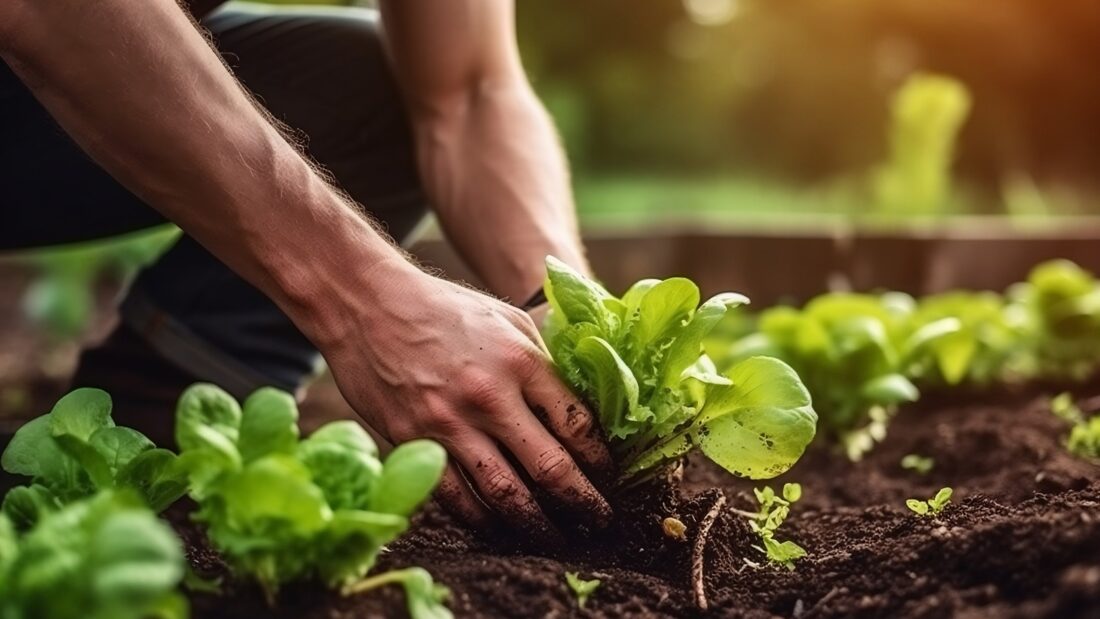Good, healthy workable soil is the holy grail of sustainable agriculture and crucial to the production of food for humans around the world. Over recent decades, soil degradation has become critical due to several issues including soil erosion, climate change and the overuse of artificial fertilisers.

But now organisations around the world are working together to develop ways in which soil health can be improved, and British farmers are leading the way in the development of sustainable farming methods. One of these is the choice of more natural and sustainable types of animal bedding for healthier livestock, along with increasingly environmentally-friendly disposal practices.
The importance of balanced crop nutrition
Farmers are encouraged to utilise the practice of balanced crop nutrition which means replacing the nutrients removed from the soil when crops are harvested. At this stage, applying adequate amounts of organic biomass either in the form of ‘green manure’ or organic fertiliser helps to replace lost nutrients to boost the health of the soil and prevent soil degradation. This has the added benefit of reducing or eliminating the need for artificial fertilisers.
Increasing organic matter in soil enhances microbial diversity and encourages a healthy insect population whilst helping to reduce soil erosion.
Crop rotation
Most farmers understand the importance of alternating crops to prevent soil nutrient depletion. This practice reduces the build-up of pests and diseases, enhancing biodiversity while improving soil fertility.
Reduced tilling
It is widely accepted that over-digging or over-tilling the land is not necessary. Reducing tilling minimises soil and organic matter disturbance to maintain the structure of the soil as well as decreasing carbon escape whilst encouraging water retention.
Agroforestry and rotational grazing
This is the practice of integrating trees and shrubs with crops and livestock to prevent soil erosion through root systems and improve water management. Rotational grazing not only prevents soil compaction. It also improves the organic structure and nutrient levels of the soil by utilising natural manure as a fertiliser.
Hedgerow planting
Hedgerow planting is a practice that once disappeared from agricultural land and has now thankfully returned. Planting hedgerows and grassy strips or wildflower meadows along the edges of fields helps to prevent soil erosion and runoff. The greatest benefit comes with from the encouragement and vital support this provides to wildlife and pollinators.
Integrated pest management
A combination of biological and pest control methods, such as using natural predators and soil additives reduces the need for chemical pesticides. These, in the past, have done so much damage to the soil. Natural pest control methods protect beneficial soil organisms.
Regenerative agriculture
Some farmers are turning to a more holistic way of farming in order to better protect the land. Regenerative farming, once common but swallowed up over decades by industrialised agriculture, aims to increase yields, reduce energy use and maintain soil health. Here’s how regenerative farming helps.
Carbon sequestration
Healthy soil acts as a carbon sink, drawing carbon dioxide from the atmosphere. According to recent research, this could, if widely adopted, store most if not all of the current annual CO2 emissions.
Enhanced biodiversity
Regenerative agriculture helps to create healthier ecosystems because diverse crops and cover crops or green manure attract beneficial insects. This reduces the need for chemical pesticides, which can leach into the soil.
Improved water management
By improving the structure of the soil this increases the ability of the soil to hold water. This improves drought resilience for farms whilst also reducing the chances of water pollution from runoff.
Our farmers are the custodians of the land and the soil which grows crops to feed us. Through the use of sustainable farming practices, the good health of the soil and the safety of our food supply can be protected for future generations.



